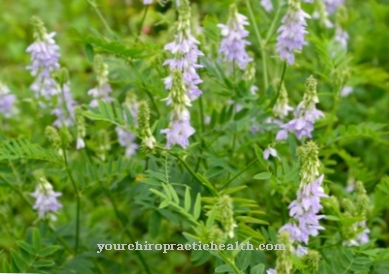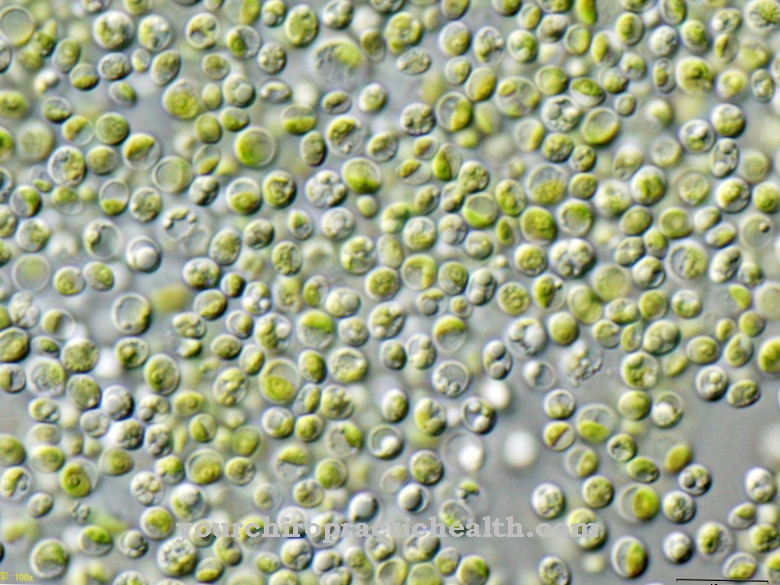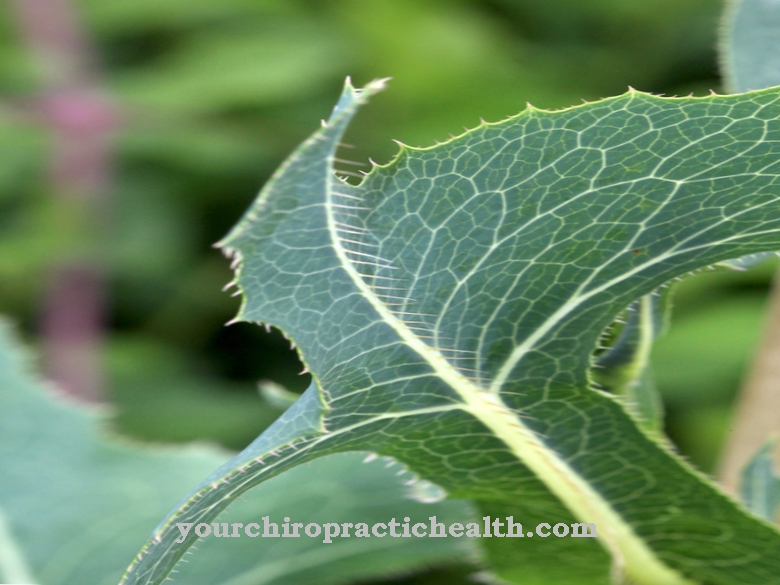The evergreen myrtle bushes are typical of the Mediterranean flora. In addition to their use in herbal cuisine, their essential oils are said to have healing properties. myrtle is used in the herbal kitchen, its oil is used in the cosmetics industry.
Occurrence & cultivation of the myrtle

It was considered a symbol of love and beauty, purity, fertility, chastity and joy - brides were adorned with myrtle wreaths and grooms with myrtle branches - hence the term “bridal myrtle”. The evergreen myrtle bush can grow up to five meters high. In our Central European regions, the myrtle are mainly cultivated as a container plant because they cannot survive severe night frosts in the wild. Then the plant remains much smaller.
The rough, leathery and narrow leaves are typical of myrtles. The myrtle leaves are between one and five centimeters long and are opposite. They are relatively densely populated with the oil glands, while they appear to be translucent, dotted. While the tops of the leaves shine dark green, the undersides of the myrtle leaves appear lighter. Aged myrtle branches often remain mostly bare.
From the beginning of May until midsummer, myrtles form small white flowers that smell beguiling. On up to three centimeters long flower styles they stand individually in the axils of the leaves. The sepals of the myrtle flowers are triangular, while the petals appear almost circular. The stamens are equipped with yellow anthers. The flowers of the myrtle ripen into dark berries, about one centimeter in size and blue-black in color.
In addition to various resins, bitter substances and tannins, myrtle plants contain a lot of essential oil. The tea tree (Melaleuca) is a well-known member of the great myrtle family and supplier of the popular tea tree oil. Myrtles are offered for growing in plant pots. All myrtles are sun lovers, but they also grow well in light shade.
Because myrtles thrive in natural surroundings on stony and lime-free soils, lime-free substrates are recommended for individual husbandry. Myrtles require regular fertilization and continuous watering.
While the fresh branches of the myrtle are harvested as a medicinal plant in the course of the summer, the somewhat smaller leaves of the myrtle, cultivated in planters, are available all year round for use in the herbal kitchen and for making liqueurs.
Effect & application
Its oil is extracted from the leaves of the myrtle, which is about 0.1 to 0.8 percent. Apart from natural regional fluctuations, myrtle oil contains on average: 24.5 percent, 1.8 percent cineole, 24.5 percent alpha-pinene, 12.3 percent limonene, 11.6 percent tannin, 8.2 percent gamma-terpinene, 3, 3 percent nerol, 2.5 percent linalyl acetate, 2.8 percent geraniol, and 0.5 percent gamma-pinene.
With its pronounced secretion-promoting effect, myrtle oil stimulates the appetite. As myrtol, which is made from eucalyptus oil, sweet orange oil, myrtle oil and lemon oil in a ratio of 66: 32: 1: 1, it is one of the most popular cough suppressants in Germany. It loosens the mucus and thus helps to relieve the airways. The myrtle oil is a liberating agent for combating bronchial infections.
The healing effects of myrtle are also used against sinus infections and against some urinary tract problems. The high quality essential oil of myrtle has an antiseptic effect. That is why it is used in the treatment of wounds, against inflammation of the gums and hemorrhoids.
The grated leaves can relieve skin problems such as psoriasis and acne. Myrtle oil is an important raw material for traditional medicinal plant oils - a popular example is the popular tea tree oil. As an incense and scented oil, myrtle has been used for air purification since ancient times. In this way it ensures concentration, attention and mental clarity. The fragrance makes meditation easier, it conveys self-confidence and courage.
In the herbal kitchen, myrtle branches are a spicy addition to roasts and grilled meat. The leaves are either ground or used whole. Harvested myrtle berries can be cooked in gravy like juniper berries. The buds and flowers of the myrtle are also a pretty and spicy decoration of fresh salads. The sepals should be plucked off before serving.
Myrtle is also a raw material in the production of liqueur: an example is the sweet Myrto Rosso, which is made from myrtle berries. Myrto Bianco, made from the flowers and foliage of the myrtle, is dry. In the cosmetics industry, myrtle oil is used as a base for cosmetics and perfumes.
Dried flowers and leaves spread a nice scent over long periods of time, so that they can be easily processed into scented pillows or potpourris. The scent of myrtle harmonizes particularly well with citrus oils, lavender, flower oils and resins.
Importance for health, treatment & prevention
The mild positive effects of myrtle are used again and again as a preventive measure by health-conscious people: as an inhalation, an additive for relaxing baths, in meditation mixtures as well as a beneficial myrtle tea and as a nutritional supplement, for example in traditional Ayurveda as organic Tulsi Churna, both the oil and the flowers and Used leaves of myrtle.
The myrtle gives flavor, medicinal properties and fragrance all year round. In summer it can be placed outdoors as a decorative container plant - and if you have a winter garden, you can enjoy the Mediterranean atmosphere all year round.




























